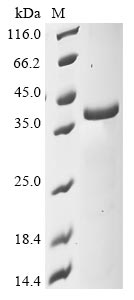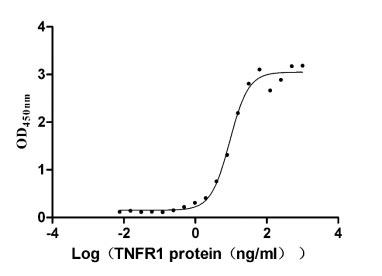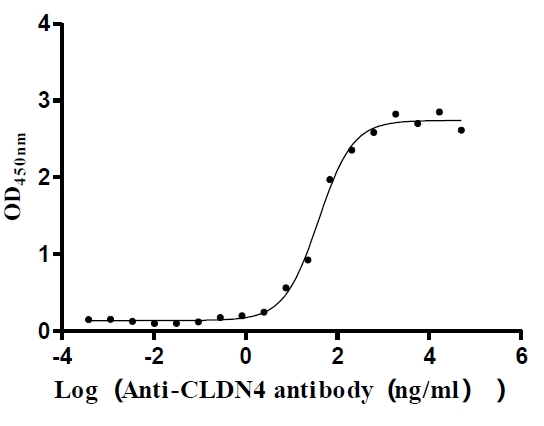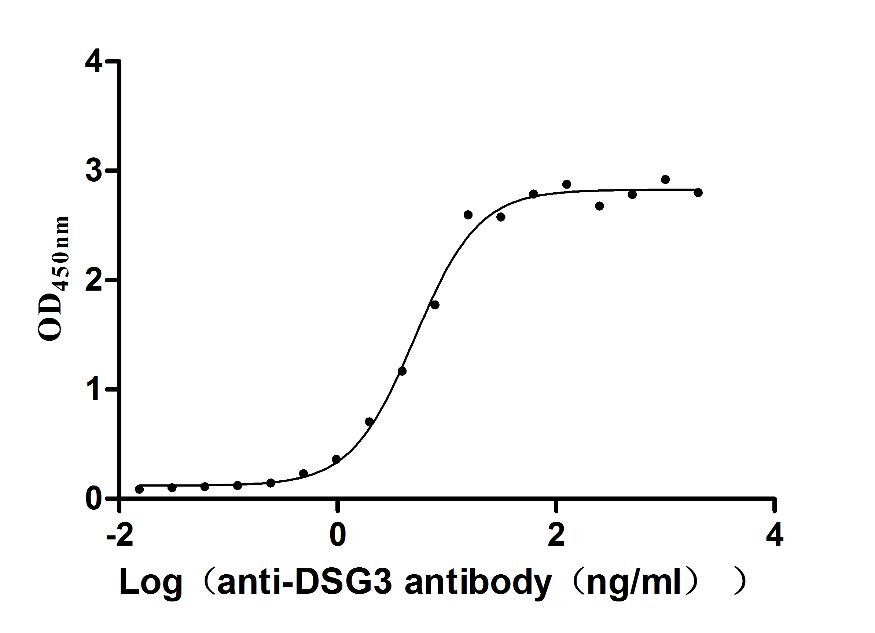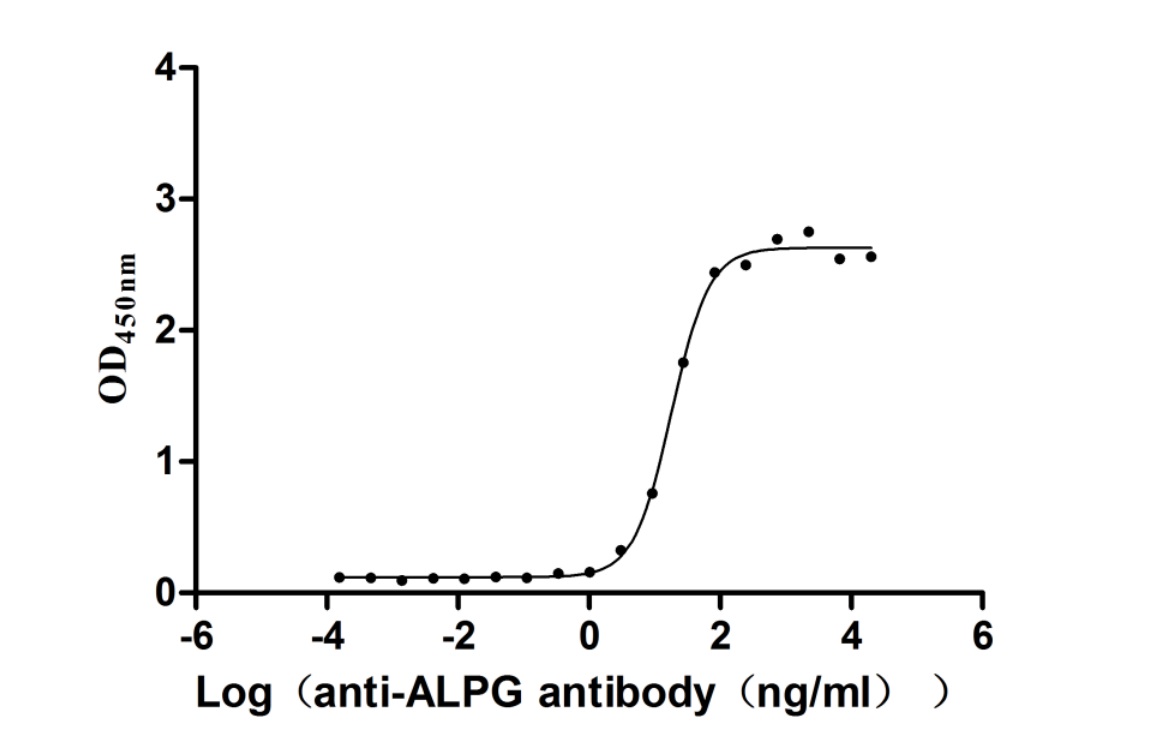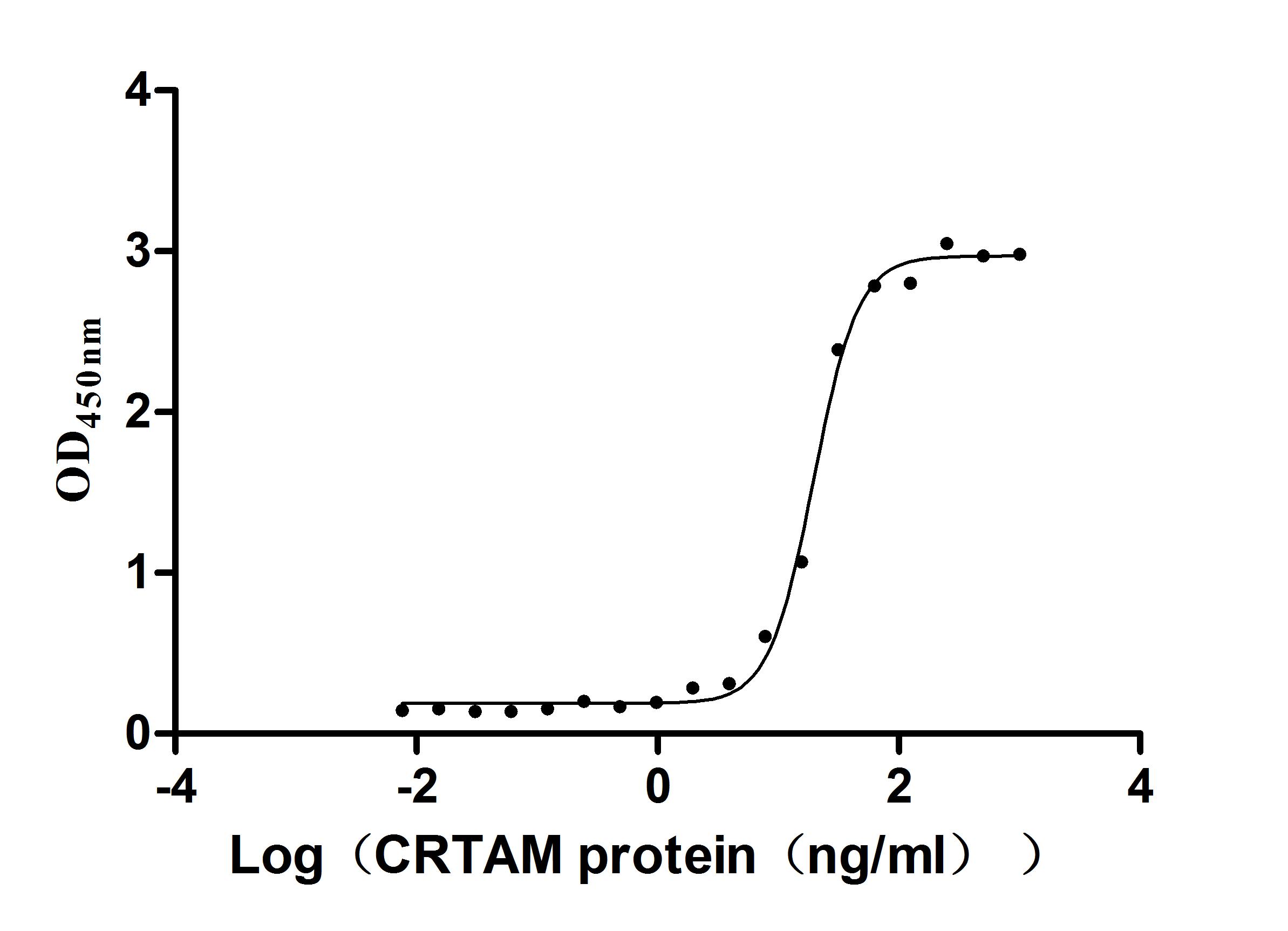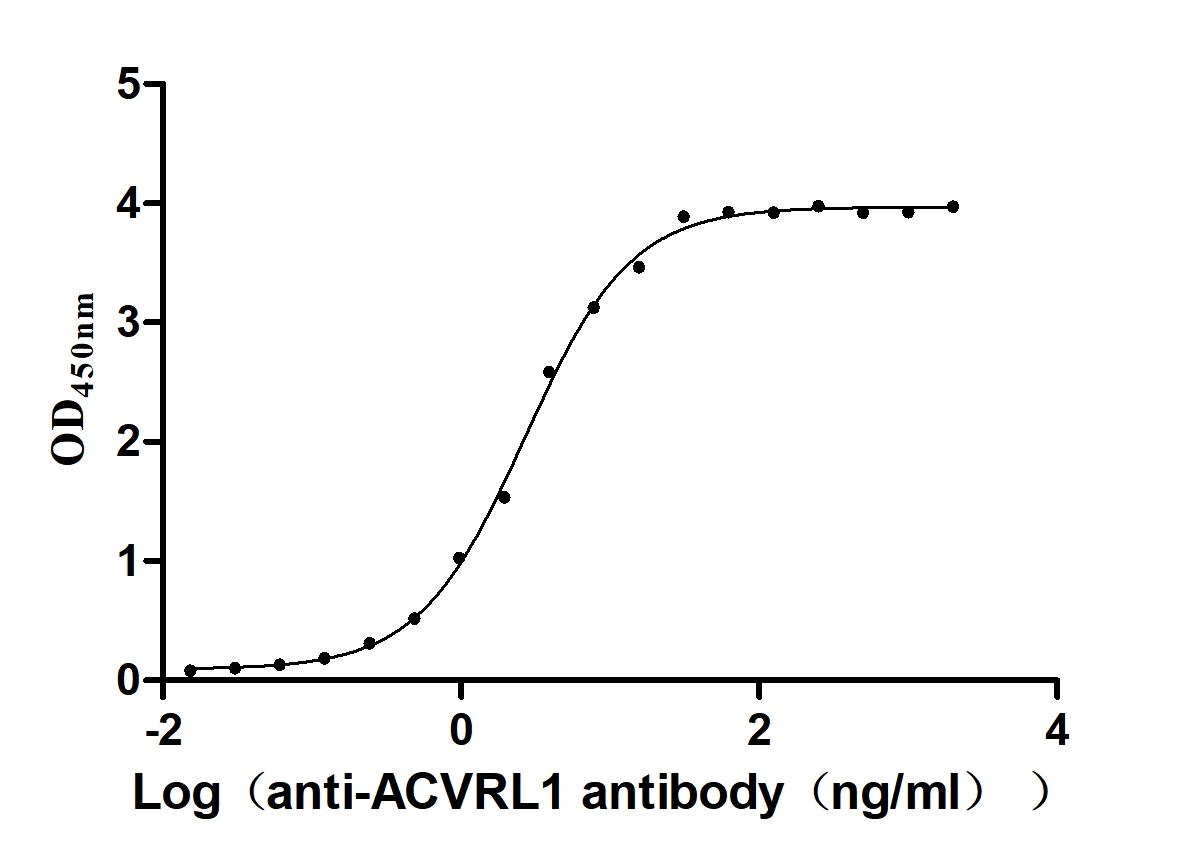Recombinant Mouse NAD-dependent protein deacylase sirtuin-5, mitochondrial (Sirt5)
In Stock-
中文名称:小鼠Sirt5重组蛋白
-
货号:CSB-EP814306MO
-
规格:¥2328
-
图片:
-
其他:
产品详情
-
纯度:Greater than 85% as determined by SDS-PAGE.
-
基因名:
-
Uniprot No.:
-
别名:Regulatory protein SIR2 homolog 5 SIR2-like protein 5
-
种属:Mus musculus (Mouse)
-
蛋白长度:Full Length of Mature Protein
-
来源:E.coli
-
分子量:37.6 kDa
-
表达区域:37–310aa
-
氨基酸序列SSNMADFRKCFANAKHIAIISGAGVSAESGVPTFRGAGGYWRKWQAQDLATPQAFARNPSQVWEFYHYRREVMRSKEPNPGHLAIAQCEARLRDQGRRVVVITQNIDELHRKAGTKNLLEIHGTLFKTRCTSCGTVAENYRSPICPALAGKGAPEPETQDARIPVDKLPRCEEAGCGGLLRPHVVWFGENLDPAILEEVDRELALCDLCLVVGTSSVVYPAAMFAPQVASRGVPVAEFNMETTPATDRFRFHFPGPCGKTLPEALAPHETERTS
Note: The complete sequence including tag sequence, target protein sequence and linker sequence could be provided upon request. -
蛋白标签:N-terminal 10xHis-tagged and C-terminal Myc-tagged
-
产品提供形式:Liquid or Lyophilized powder
Note: We will preferentially ship the format that we have in stock, however, if you have any special requirement for the format, please remark your requirement when placing the order, we will prepare according to your demand. -
缓冲液:If the delivery form is liquid, the default storage buffer is Tris/PBS-based buffer, 5%-50% glycerol. If the delivery form is lyophilized powder, the buffer before lyophilization is Tris/PBS-based buffer, 6% Trehalose.
-
复溶:We recommend that this vial be briefly centrifuged prior to opening to bring the contents to the bottom. Please reconstitute protein in deionized sterile water to a concentration of 0.1-1.0 mg/mL.We recommend to add 5-50% of glycerol (final concentration) and aliquot for long-term storage at -20°C/-80°C. Our default final concentration of glycerol is 50%. Customers could use it as reference.
-
储存条件:Store at -20°C/-80°C upon receipt, aliquoting is necessary for mutiple use. Avoid repeated freeze-thaw cycles.
-
保质期:The shelf life is related to many factors, storage state, buffer ingredients, storage temperature and the stability of the protein itself.
Generally, the shelf life of liquid form is 6 months at -20°C/-80°C. The shelf life of lyophilized form is 12 months at -20°C/-80°C. -
货期:3-7 business days
-
注意事项:Repeated freezing and thawing is not recommended. Store working aliquots at 4°C for up to one week.
-
Datasheet & COA:Please contact us to get it.
相关产品
靶点详情
-
功能:NAD-dependent lysine demalonylase, desuccinylase and deglutarylase that specifically removes malonyl, succinyl and glutaryl groups on target proteins. Activates CPS1 and contributes to the regulation of blood ammonia levels during prolonged fasting: acts by mediating desuccinylation and deglutarylation of CPS1, thereby increasing CPS1 activity in response to elevated NAD levels during fasting. Activates SOD1 by mediating its desuccinylation, leading to reduced reactive oxygen species. Activates SHMT2 by mediating its desuccinylation. Modulates ketogenesis through the desuccinylation and activation of HMGCS2. Has weak NAD-dependent protein deacetylase activity; however this activity may not be physiologically relevant in vivo. Can deacetylate cytochrome c (CYCS) and a number of other proteins in vitro such as Uox.
-
基因功能参考文献:
- Data indicate that sirtuin 5 (SIRT5) is an important mitochondrial enzyme for protection against metabolic and ischemic stress following protein kinase C epsilon (PKCepsilon) activation in the brain. PMID: 27435822
- findings reveal a key role for SIRT5 in maintaining cardiac oxidative metabolism under pressure overload to ensure survival PMID: 28972174
- Deletion of Sirt5 in starved mouse embryonic fibroblasts increased levels of mitochondrial dynamics leading to mitochondrial accumulation of the pro-fission Drp1 and to mitochondrial fragmentation. PMID: 28340937
- Our study uncovers a SIRT5-dependent mechanism that regulates cellular NADPH homeostasis and redox potential by promoting IDH2 desuccinylation and G6PD deglutarylation. PMID: 27113762
- Data (including data from studies using knockout mice) suggest that SIRT5 is targeted to protein complexes on the inner mitochondrial membrane via affinity for cardiolipin to promote respiratory chain function, particularly Complex I and Complex II; SIRT5 expression is observed in inner mitochondrial membrane of periportal hepatocytes. PMID: 28458255
- Data show that peroxisome proliferator-activated receptor gamma coactivator 1-alpha (PGC-1alpha) overexpression significantly increased the expression of sirtuin 3 (SIRT3) and sirtuin 5 (SIRT5). PMID: 27052737
- In the cochlea, the expression of SIRT1, 3, and 5 (both mRNA and protein) was decreased in the old mice PMID: 26472659
- These findings establish that regulating heart metabolism and function is a major physiological function of lysine succinylation and SIRT5. PMID: 27051063
- SIRT5 has a role in cellular metabolism with a multiple enzymatic activities PMID: 26208827
- SIRT3 and SIRT5 regulate the enzyme activity and cardiolipin binding of very long-chain acyl-CoA dehydrogenase PMID: 25811481
- Pathway analysis identified glycolysis as the top SIRT5-regulated pathway. Importantly, glycolytic flux was diminished in primary hepatocytes from Sirt5(-/-) compared to WT mice. PMID: 26073543
- Data indicated that SIRT5 ameliorates MPTP-induced nigrostriatal dopaminergic degeneration via preserving mitochondrial antioxidant capacity. PMID: 25541039
- Lysine glutarylation is a protein posttranslational modification regulated by SIRT5. PMID: 24703693
- Loss of SIRT5 leads to accumulation of medium- and long-chain acylcarnitines and decreased beta-hydroxybutyrate production in vivo. PMID: 24315375
- Sirt5 is likely to be dispensable for the metabolic homeostasis under the basal conditions. PMID: 24076663
- We have isolated and characterized the murine sirt5 genomic sequence, which spans a region of 24,449 bp and which has one single genomic locus. PMID: 23673559
- SIRT5 represses biochemical activity of, and cellular respiration through, two protein complexes identified as pyruvate dehydrogenase complex and succinate dehydrogenase. PMID: 23806337
- The results suggest that SIRT5 activates UOX through deacetylation in mouse liver mitochondria. PMID: 23085393
- These data indicate SIRT5 also has a role in the metabolic adaptation to fasting, high protein diet and calorie restriction. PMID: 20157539
- Because ammonia generated during fasting is toxic, SIRT5 protein might play a protective role by converting ammonia to non-toxic urea through deacetylation and activation of CPS1. PMID: 20097174
- results suggest that the SIRT3, SIRT4, and SIRT5 proteins exert distinct functions in mitochondria. PMID: 18054327
- SIRT5 plays a pivotal role in ammonia detoxification and disposal by activating carbamoyl phosphate synthetase 1 PMID: 19410549
显示更多
收起更多
-
亚细胞定位:Mitochondrion. Cytoplasm, cytosol. Nucleus. Note=Mainly mitochondrial. Also present extramitochondrially, with a fraction present in the cytosol and very small amounts also detected in the nucleus.
-
蛋白家族:Sirtuin family, Class III subfamily
-
组织特异性:Detected in brain, liver, heart, kidney, lung, thymus, spleen, skeletal muscle, intestine, pancreas and testis (at protein level).
-
数据库链接:
Most popular with customers
-
Recombinant Human Secreted and transmembrane protein 1 (SECTM1), partial (Active)
Express system: Mammalian cell
Species: Homo sapiens (Human)
-
Recombinant Human Tumor necrosis factor receptor superfamily member 1A (TNFRSF1A), partial (Active)
Express system: Mammalian cell
Species: Homo sapiens (Human)
-
Recombinant Mouse Prolactin receptor (Prlr), partial (Active)
Express system: Mammalian cell
Species: Mus musculus (Mouse)
-
Recombinant Human Claudin-4 (CLDN4)-VLPs (Active)
Express system: Mammalian cell
Species: Homo sapiens (Human)
-
Recombinant Human Desmoglein-3 (DSG3), partial (Active)
Express system: Baculovirus
Species: Homo sapiens (Human)
-
Recombinant Human Alkaline phosphatase, germ cell type (ALPG) (Active)
Express system: Mammalian cell
Species: Homo sapiens (Human)
-
Recombinant Human Cell adhesion molecule 1 (CADM1), partial (Active)
Express system: Mammalian cell
Species: Homo sapiens (Human)
-
Recombinant Human Serine/threonine-protein kinase receptor R3 (ACVRL1), partial (Active)
Express system: Baculovirus
Species: Homo sapiens (Human)

